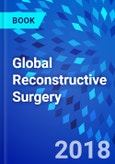As the surgical community steps up to tackle the global burden of surgical disease in developing countries, Global Reconstructive Surgery is the first reference of its kind to offer focused, pertinent coverage of key areas surgeons need to understand to fully participate in this endeavor. It provides authoritative, real-world guidance on common surgeries performed around the world to help optimize outcomes in difficult environments and for a variety of conditions.
- Offers practical wisdom and experience from surgeons who have lived and worked in challenging global settings. The clear, organized format is based on the way clinicians examine, prepare for, and treat patients in resource-limited circumstances.
- Each chapter matches the clinical pathway and thought processes of care delivery, from the clinical problem and pre-operative assessment to operative intervention, post-operative care, and possible complications and options for management.
- Covers perioperative management, cleft and craniofacial surgery, hand surgery, burns, trauma, and key techniques commonly performed by surgeons across the globe.
- Includes the surgical steps of each procedure, photographs of clinical cases, and surgical pearls for resource-poor settings.
- Discusses alternative approaches related to cultural considerations and unavailability of state-of-the-art equipment.
- Ideal for plastic surgeons, otolaryngologists, craniofacial surgeons. oral and maxillofacial surgeons, general surgeons - both those who volunteer for surgical trips and those training in local communities.
- Enhanced eBook version included with purchase, which allows you to access all of the text, figures, and references from the book on a variety of devices
Table of Contents
Section 1: Perioperative Management
1.1 Preoperative Screening
1.2 Operating Room Requirements and Setup
1.3 General Anesthesia
1.4 Regional Anesthesia
1.5 WHO Safety Protocols and Process Excellence
1.6 Anesthesia Emergencies
1.7 PACU Requirements and Setup
1.8 Post Operative Pain Control
1.9 Post Operative Anesthetic Complications (Nausea, Airway, Sedation)
Section 2: Key Techniques
2.1 Skin Grafting
2.2 Nerve Repair
2.3 Tendon Repair
2.4 Bone Fixation
2.5 Local Skin Flaps
2.6 Common Regional Flaps
2.7 Microsurgery Essentials
2.8 Common Free Flaps
Section 3: Cleft and Craniofacial Surgery
3.1 Primary Unilateral Cleft Lip Repair
3.2 Primary Bilateral Cleft Lip Repair
3.3 Secondary Cleft Lip Reconstruction
3.4 Primary Cleft Palate Repair
3.5 Alveolar Bone Grafting
3.6 Scalp Reconstruction
3.7 Ptosis Repair
3.8 Nasal Reconstruction
3.9 Microtia Reconstruction
3.10 Jaw Surgery
Section 4: Burns
4.1 Acute Burn Management
4.2 Burn Wound Management
4.3 Eyelid Burn Reconstruction
4.4 Face Burn Reconstruction (Cheek, Nose, and Lip)
4.5 Neck Burn Reconstruction
4.6 Shoulder & Axilla Burn Reconstruction
4.7 Elbow & Wrist Burn Reconstruction
4.8 Hand Burn Reconstruction
4.9 Leg Burn Reconstruction
4.10 Foot Burn Reconstruction
4.11 Post-Operative Burn Therapy
Section 5: Hand Surgery
5.1 Syndactyly Reconstruction
5.2 Polydactyly Reconstruction
5.3 Thumb Hypoplasia Reconstruction
5.4 Transverse Deficiency
5.5 Cleft Hand
5.6 Tendon Transfers
5.7 Hand Fracture Treatment - Acute and Delayed
5.8 Replantation
5.9 Cerebral Palsy Surgery
5.10 Principles of Hand Therapy and Splint/Orthosis Fabrication for International Medical Missions
Section 6: Trauma
6.1 Compartment Syndrome Treatment
6.2 Lower Extremity Trauma Reconstruction








